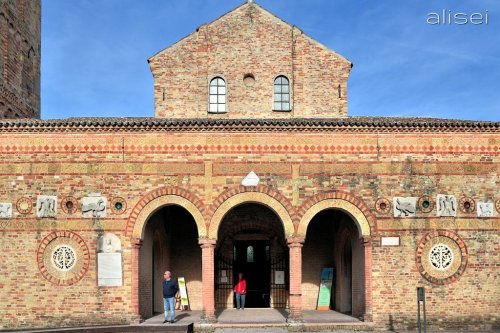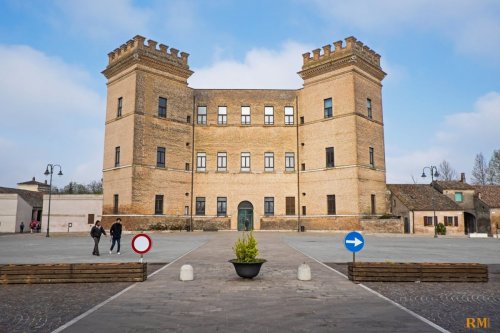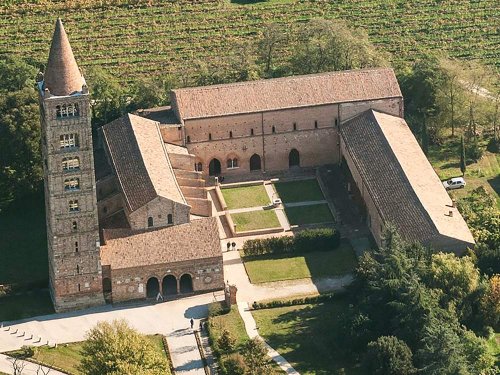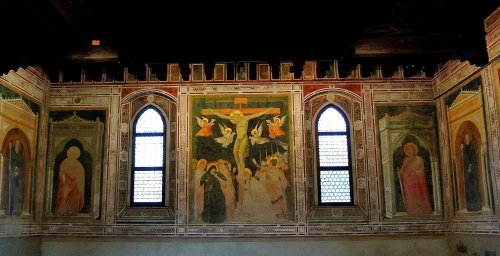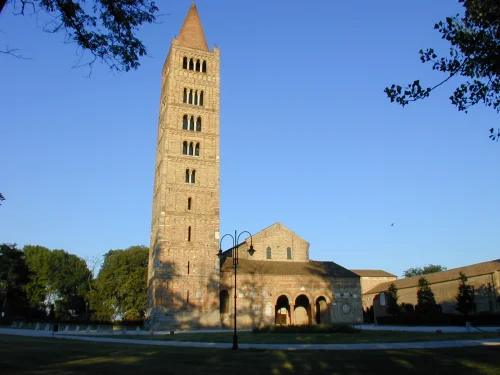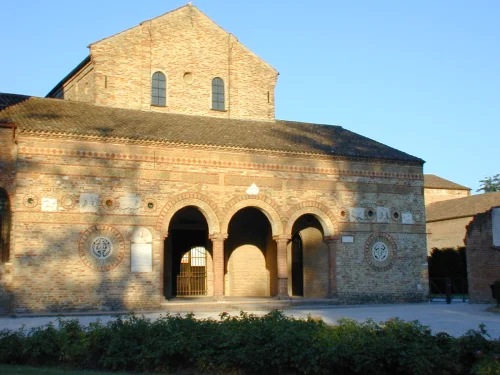Open all year round: 8.30 am - 7.30 pm
Accesible
- by car - from Ferrara along the Ferrara-Comacchio motorway and then onto the 309 Romea state-road towards Venice for about 16 km;
- by train and bicycle - from railway station Ferrara train for Codigoro ("Ferrovie Padane" phone 0532 91478) and 5 km by bicycle
- by Pullman - from station of Codigoro taxibus no. 8 (phone 0533 729505)
A masterpiece of Byzantine and Romanesque art, the abbey can be seen from a distance with its bell tower, whicht, at 48 metres high, dominates the surrounding countryside like a "lighthouse" in the sea of green that surrounds it.
A group of Benedictine monks came together here around the 7th century and reached its peak in the 11th and 12th centuries. The saint and abbot Guido degli Strambiati lived here as did the monk Guido da Pomposa (mistakenly called "d'Arezzo"), the inventor of the modern system for transcribing music.
Of the original abbey today it is possible to admire several buildings, that together make up one of the most renowned Italian and European Romanesque monuments, such as the Palace of Reason, a rare example of civic architecture, distinguished by a double portico with rounded arches supported by brick and marble columns and the beautiful Lombard style bell tower that dates back to 1063, divided into nine levels marked out by windows that change from windows with one light to mullioned windows with four lights as they go up and then finishes at the top with a pyramidal spire of considerable height.
But it is the abbey church, dedicated to Our Lady of the Assumption, that more than anything else contributes to restoring the ancient majesty of the entire complex and which stands out due to its original appearance, preceded by its porticoed atrium decorated with majolica tiles, terracotta friezes and sculptures of Byzantine type representing symbolic animals. Inside are conserved valuable frescoes by different artist, among whom the name of Vitale from Bologna stands out.
The mosaic floor is again of great value, divided into three sections from different eras. Important frescoes are also conserved in several rooms at one time lived in by monks, among which stands out the Chapter House and the Refectory.
The Pompousian Museum is in the monastery's ex-dormitory above the Chapter and exhibits pieces that have come from the restoration work and the excavations: engravings, marbles, majolica tiles and archaeological findings of various kinds, as well as detached frescoes of rare quality.
